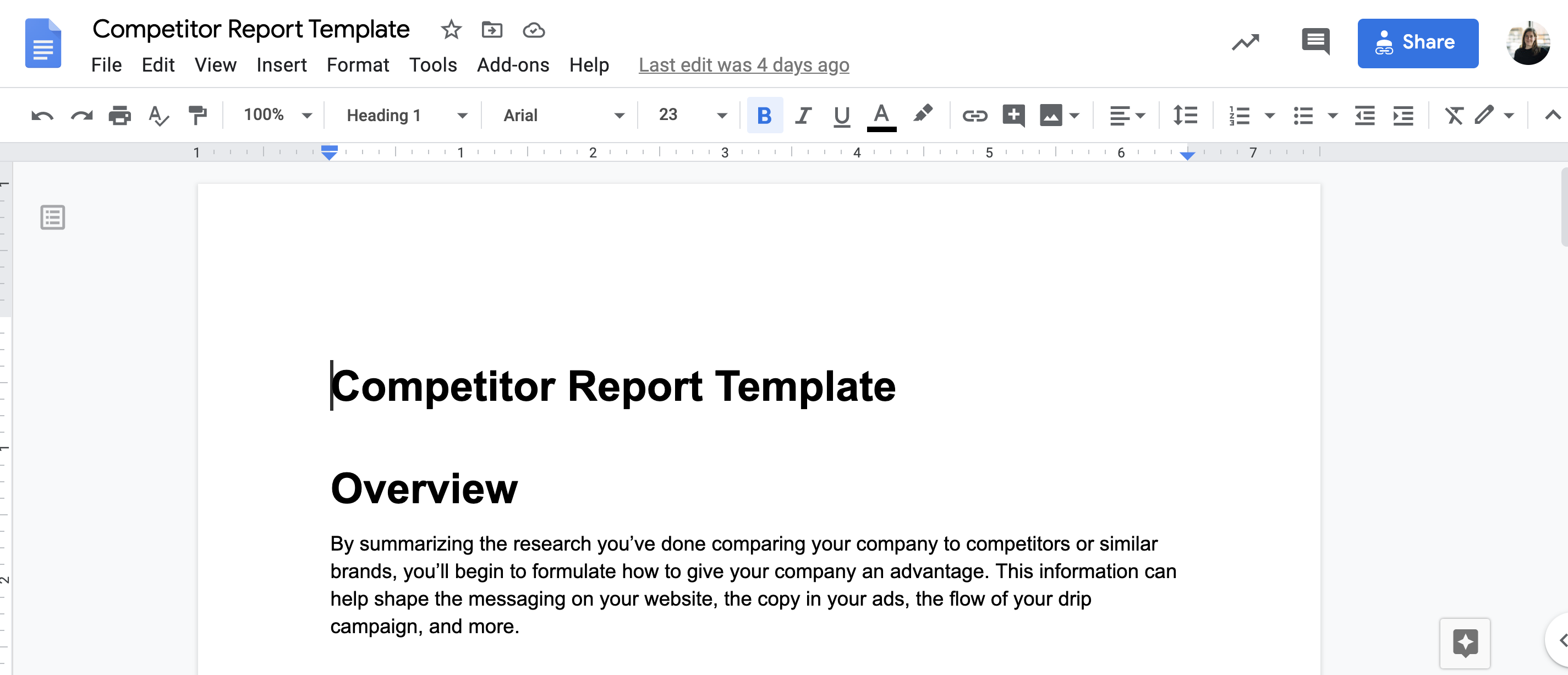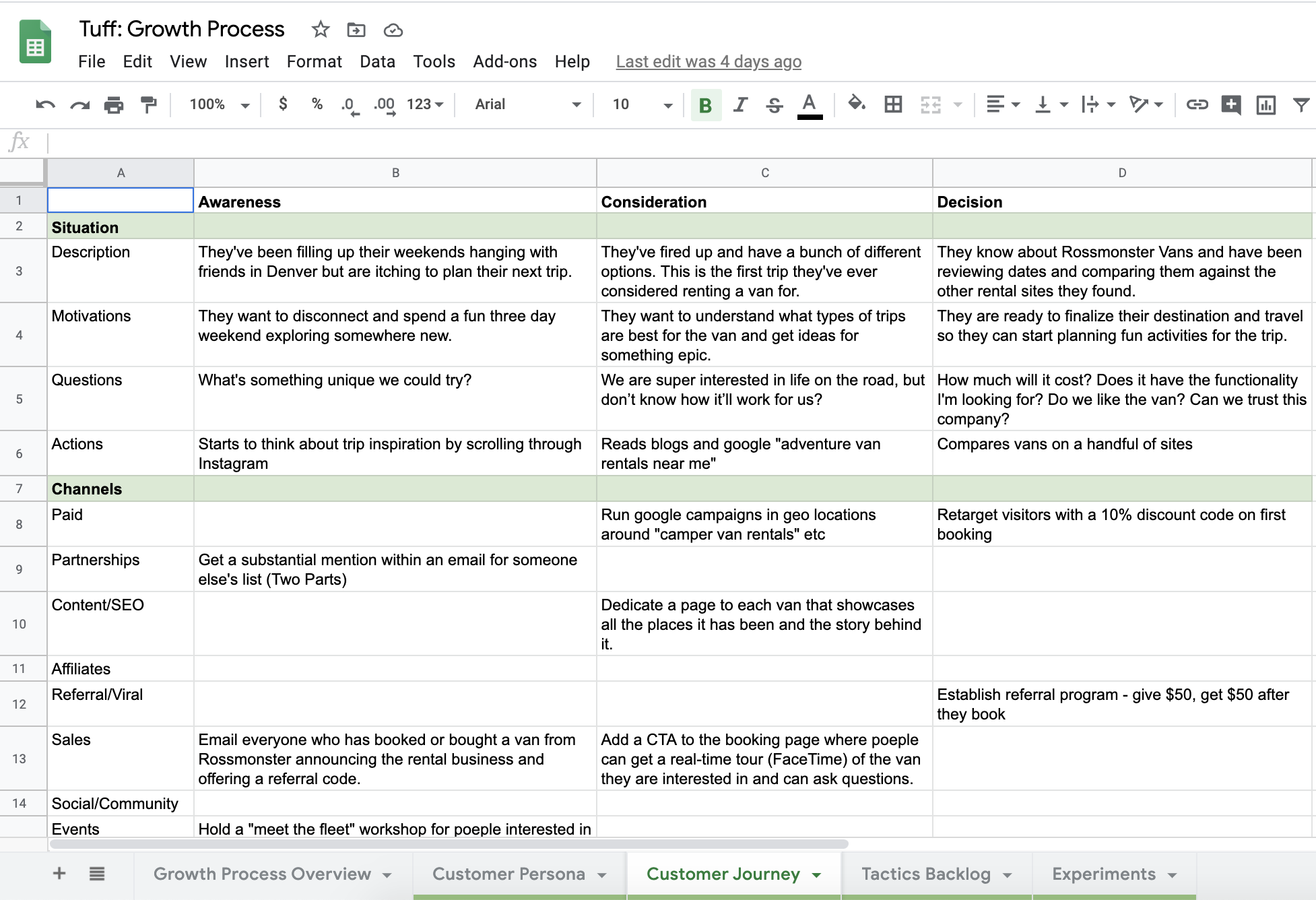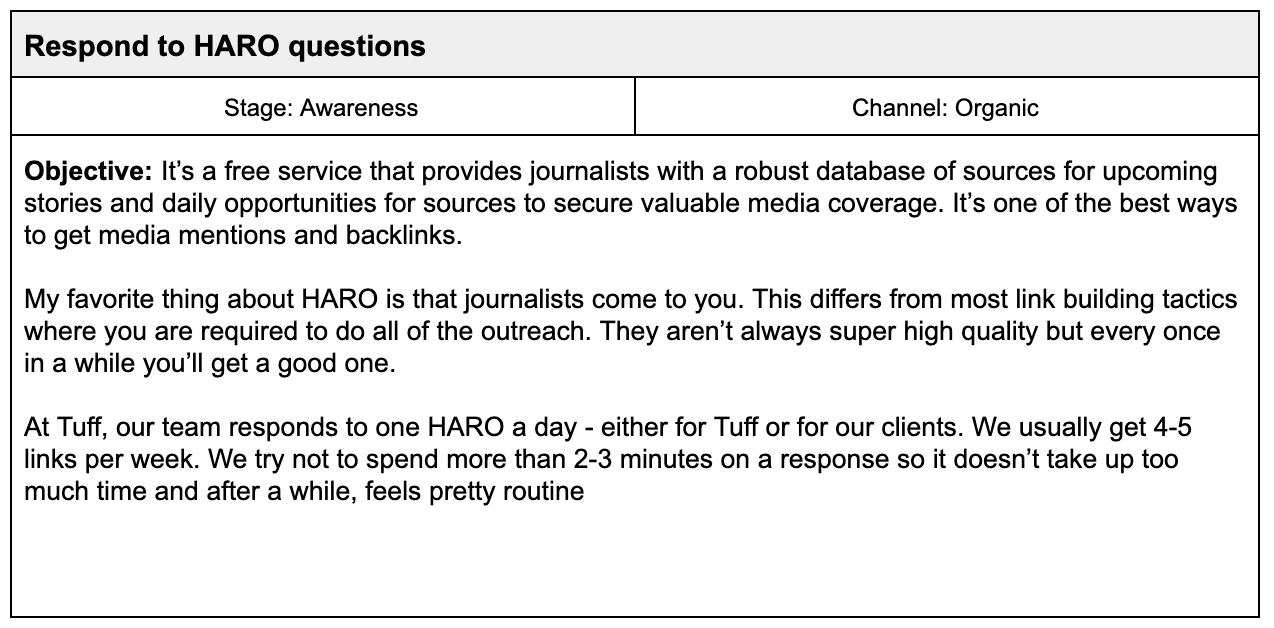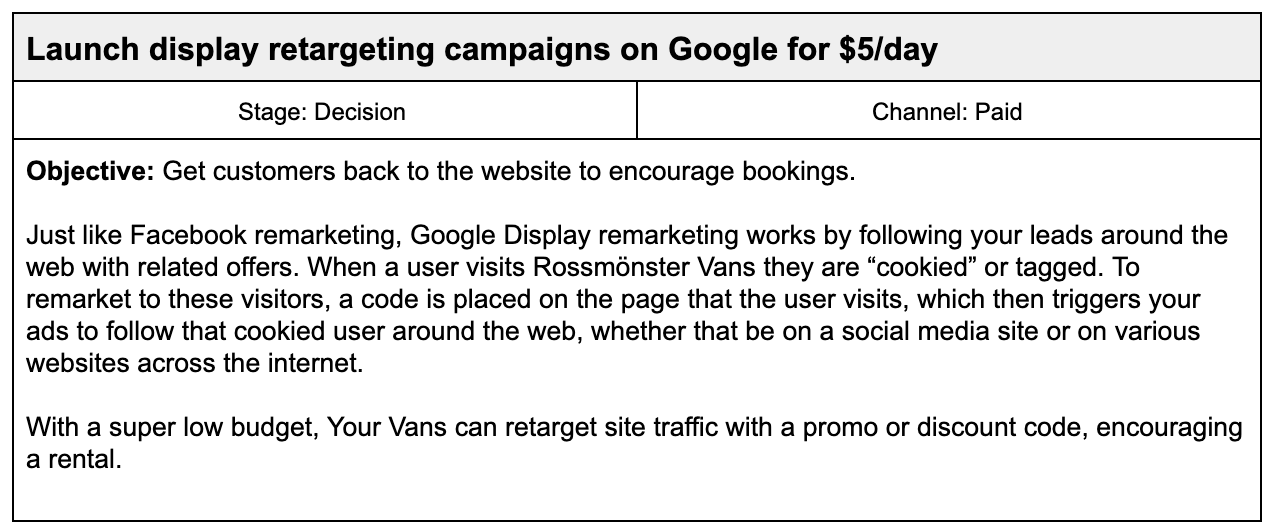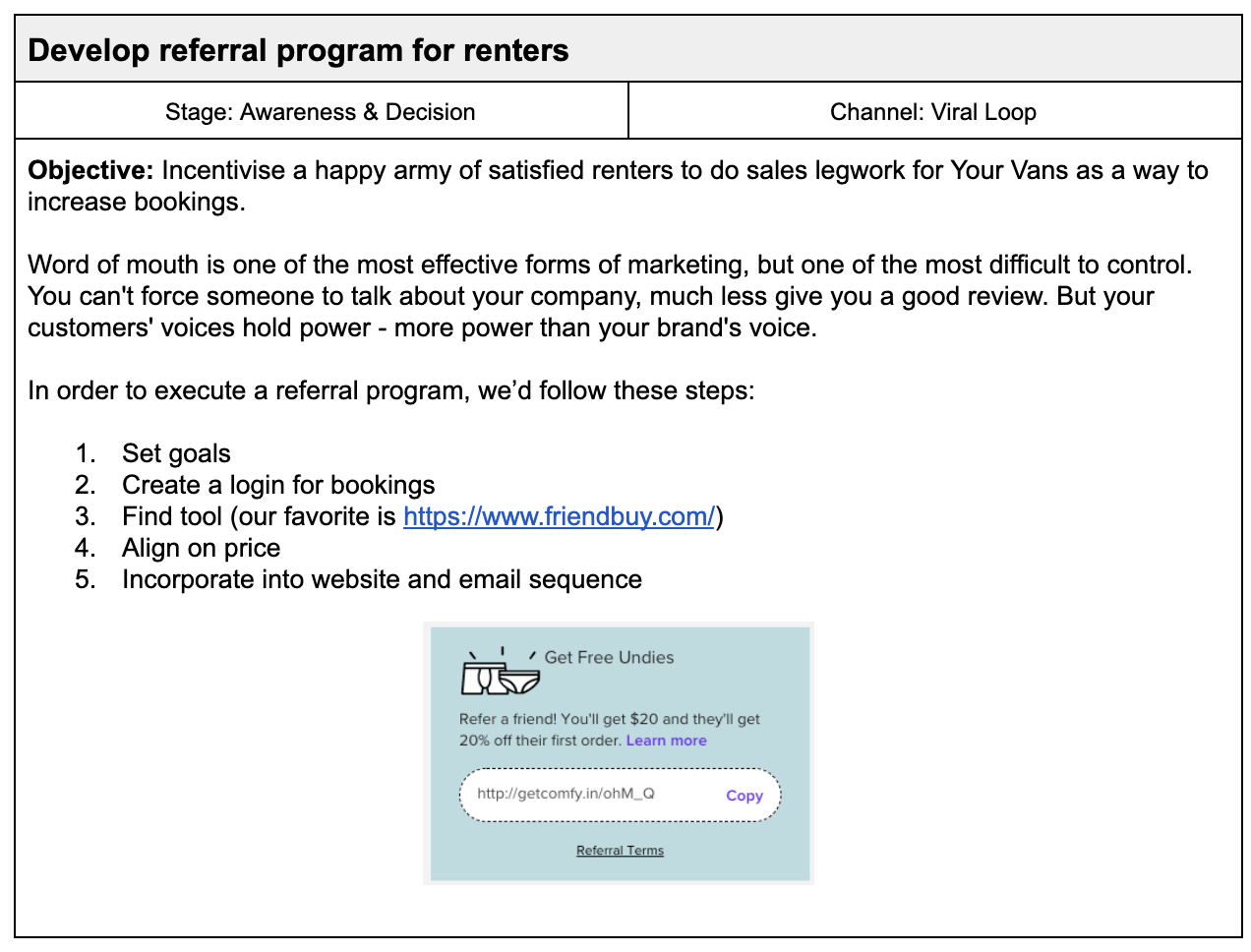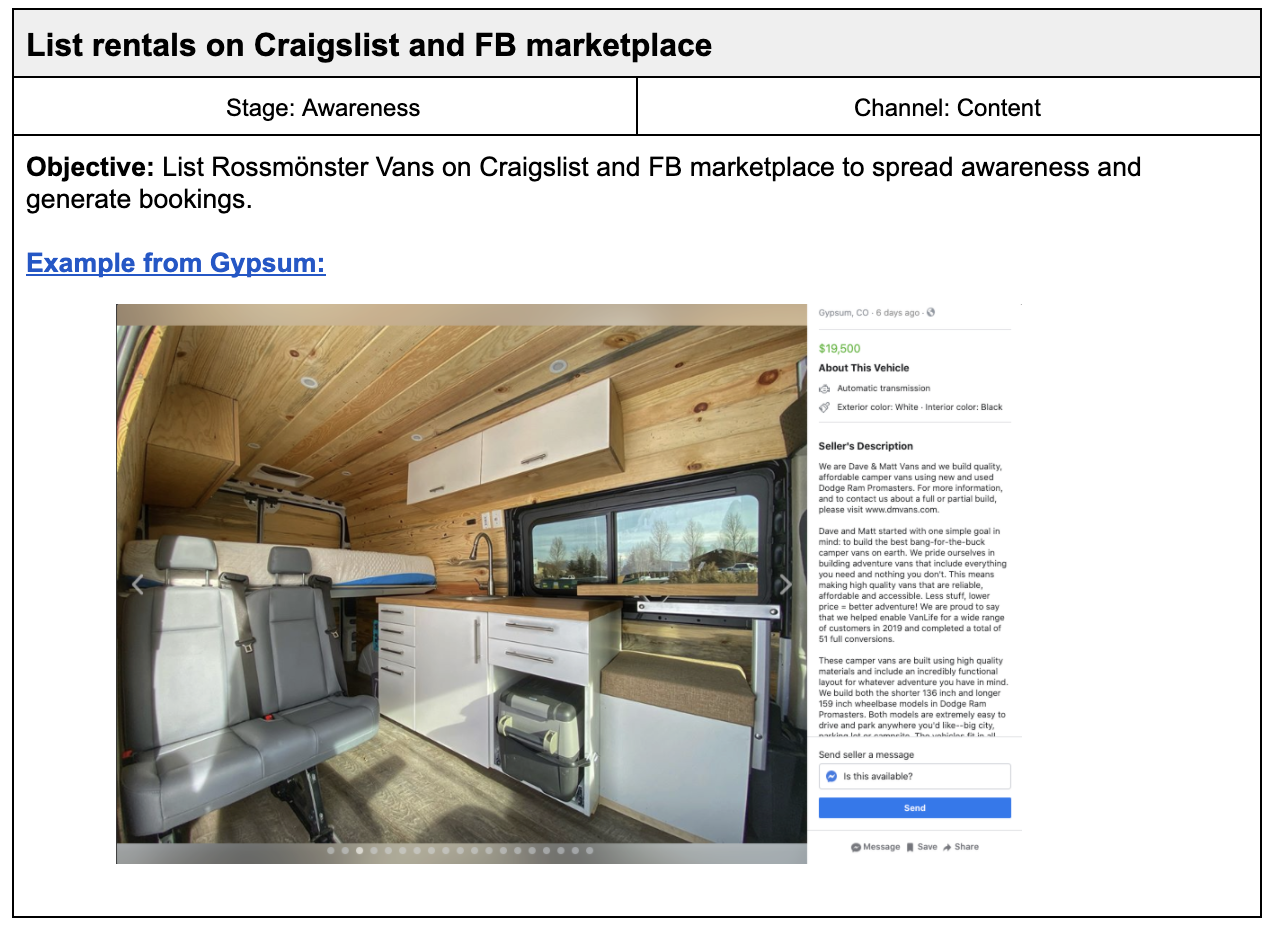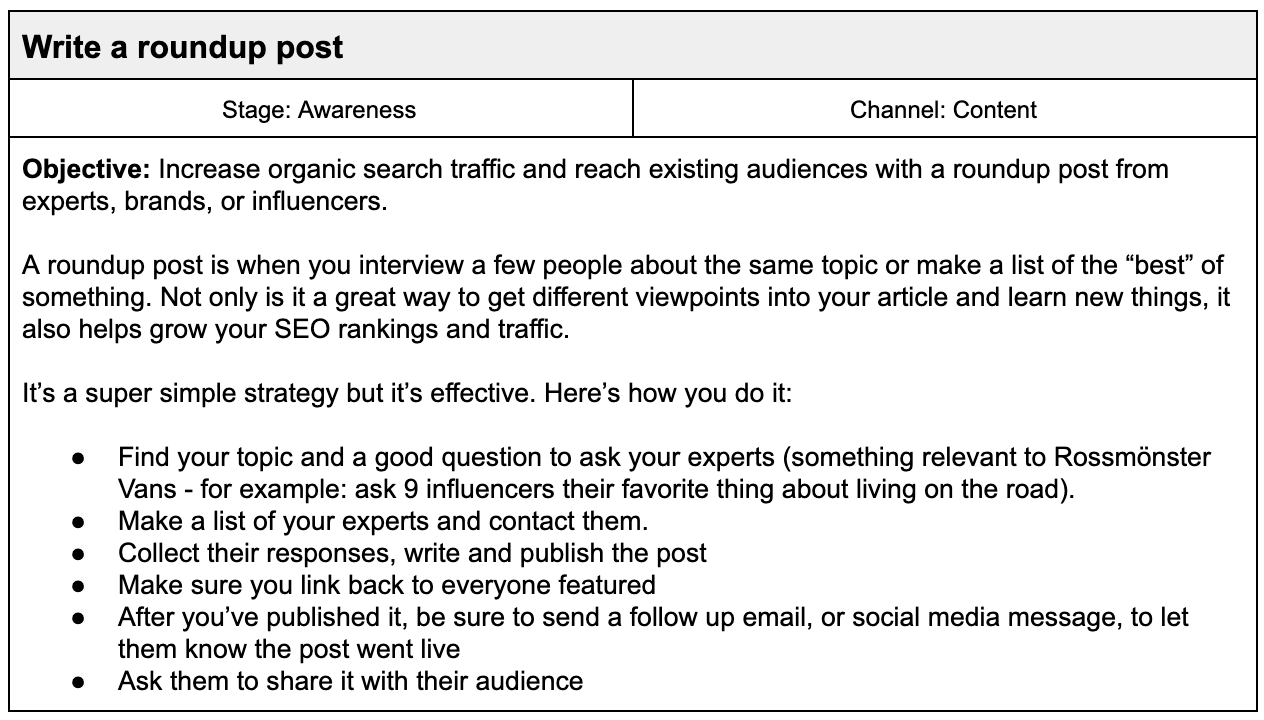How We Build Growth Marketing Strategies at Tuff (with examples from past clients)
With Tuff, I’ve been fortunate to work with a range of companies in completely different stages of their marketing maturity.
Even with the diversity in stage and industry, one step is always the same: creating a clear growth marketing strategy.
A growth marketing strategy is a high-level list of what tactics we’re going to test first, based on what is most likely to succeed. It’s a document that keeps you focused and working day-to-day on the things that have the highest impact on your business.
To see what that looks like in action, let’s review some examples of successful growth marketing strategies from past clients:
Company: Mobile app for sending handwritten cards
- Edited the onboarding flow to focus people on our main CTA: send their first card sooner
- Fixed App Store copy to convert better (images and text)
- Setup Branch.io to track every campaign
- Set up Apple Search ads
- Set up Facebook/Instagram ads
- Set up Google Ads
- Set up YouTube Ads
- Developed USG videos ($0 – did these at home)
- Create push notifications to remind people to send cards (gratitude list)
- Set up Influencer Program
- Set Pinterest ads
Company: B2B SaaS product for small business owners
- Rewrote, redesigned and rebuilt homepage and pricing page to distinguish from competitors + A/B test
- Fixed the onboarding flow to increase conversion rate
- Set up Google Ads
- Tested offer and lead gen ads for a free accounting consultation
- Set up Facebook ads pointing at free demo page
- Wrote drip emails to re-engage people who create an account but don’t finish registration
- Set up Google Ads
- Secured specific partnership, focusing on professional b2b business
These look nice and tidy, not too intimidating when we’re able to list these out. And yet, to be effective, there’s hours or work involved at each step of the strategy. These strategies also rely on multiple team members at Tuff to execute on these.
We often hear from founders that they’ve tried everything and nothing is sticking. Or, they’ve tried a bit of a BB gun approach shooting out all of the bullets to see if anything works. Effective growth marketing understands where you’re trying to go, where your audience spends time, and uses data to validate (or invalidate) how you will grow.
These conversations we have over and over again is why I wanted to write this article; to share my experiences and learnings from creating successful growth marketing strategies at several companies over the years.
In this post, we’ll go through 8 steps:
- Start with your own audience
- Outline your USP
- Go through your competitors
- Look at the customer journey
- Select the channels most likely to succeed
- Outline tactics to test
- Try your idea on a small scale.
- If it works, do more of it. If it doesn’t, go back to Step 1.
Step 1: Start with your own audience
We talk about this a lot at Tuff but you can’t really do anything without knowing who you are selling to. Without a clearly defined target audience, you’re going to seriously struggle with finding the right acquisition channels or identifying tactics to help grow your business.
Without personas, how do you know what your offer should be?
Or, what channels will help you find traction and scale? Or, how to write ad copy to drive quality traffic? Or,how to build an organic keyword strategy?
Here’s an example of good target personas from a past client:
| Aria | Melissa | John | |
| Customer 1 | Customer 2 | Customer 3 | |
| Demographics | |||
| Location | Denver | Arvada | Frisco |
| Household Income | $150,000 | $63,000 | $130,000 |
| Responsibilities | They typically work 9-5, but often find themselves bringing work home. They have a dog, and are beginning to think about kids, but have some exploring of the world around them they want to do before taking that next step. | She lives with three other women in Denver and they’ve become her family of sorts. She doesn’t have any pets or major responsibilities but is still trying to figure out what she wants from her career. She gets limited days off trying to make time on the weekends to go to Redrocks, hang out in Rino, and hike in Boulder. | John’s an avid rock climber that is obsessed with outdoor and endurance sports in Colorado. He’s a project manager for Ascension and spends his weekdays at Movement. On the weekend he’s skiing in Vail or headed on a hut trip. He has a girlfriend, Jess, who loves the outdoors just as much. John lives in a two-bedroom condo. |
| Age | 29 | 25 | 36 |
| Situation | |||
| #1 Priority | A vacation that feels adventurous, without pushing too far beyond their comfort zone. While they thrive on the excitement of finding a secret gem (whether that be a hike or the best breakfast burrito in town), they often look to ‘experts’ to help navigate and curate their ideal adventure weekend experience. | A weekend away with her girlfriends. They want to head down to Santa Fe, hitting hot springs and small towns before they land in Dulce. While they are after local experiences, they want to use the time to relax and rejuvenate. | Ready to explore – not a vacation or a weekend away – an all-out adventure trip with pals to Moab for a week long bike extravaganza. He wants to get away from his computer and phone and spend as many hours on the bike before cooking a camp meal and having beers around the fire. |
| Challenges | It’s hard to balance their weekend adventures with family and friend obligations. It feels like they are booked up for months. | She’s not the most organized planner in the world so finding time with her other friends is hard. They typically do spur of the moment trips as a result. | He is a super planner so the van or accommodations have to be available the exact time he needs it. |
| Pain Points | While they are happy with their disposable income, they don’t want to go crazy with spending because they are starting to think about kids and just bought their first starter home. | Money is tight and she wants to make sure she has enough extra cash to eat out, go to hot springs, and other activities while on vacation. | There are so many epic adventures on the list, how do you prioritize and get everyone organized to go? |
| Objections | Would it be cheaper and more relaxing if we just drove our car and did cute Airbnbs? | Will we be able to handle a van? It looks amazing in pictures but driving it feels like a challenge. | Is it rugged enough to handle on my adventures? I’m going to be spending all my time outside, do I really need an expensive van? |
| Sources | |||
| Books/Podcasts | Talking With Strangers, ArmChair Expert, and Verity | Doesn’t read but is an avid Spotify user. | Shoe Dog, GaryVee Audio Experience, and Alone On The Wall |
| Magazines/Media | NYMag, YouTube, and Two Parts Denver | Horoscopes, Fox Theater, and Bitch Media | PinkBike, GearTrade, and OpenSnow |
| Social Media | Facebook, Instagram, LinkedIn | None | |
| Communities | Rec league soccer and trivia night on Tuesday at Platt Park Brewing Co. They are both in a fantasy football league. One of their favorite things of the year is the annual chili cookoff they do at their house with 20+ friends. | Every once in a while will go to Trivia night at Spangalang but mostly stays at home. She’ll head to a concert at the BlueBird or Ogden a couple times a month. | Spends most weeknights at Movement climbing in the winter. In the summer, he’s a big cycler with a committed training plan. |
| Quotes | |||
| “For me, being outside is what it’s all about. I just want to continue to adventure and be inspired to play more in Colorado.” | “These amazing women are my partners in crime, my rocks, my husks, and I have no idea what I’d do without them! Truly grateful for this trip and friends like these!” | “It didn’t really matter in the end. I got my head on straight, enjoyed the company of a lot of passionate and friendly people, and got to see a side of Arizona mountain biking I didn’t know existed. Between the alpine adventures along Wolverton Mountain, or the beautiful and challenging landscape throughout the Granite Dells, or bombing down dusty and loose singletrack in the shadow of Thumb Butte, Prescott opened my eyes a bit.” |
For more details on building out personas, check out this guide from Buffer.
Step 2: Outline your USP
What makes your offering unique? Why would someone buy your product, subscribe to your offering, or say yes to your service?
How do you earn the right to attention?
To find your unique selling proposition (USP), you can do a few things:
- Study your personas (that’s why we start with defining your own audience!). It sounds obvious, but put yourself in your customer’s shoes. You can’t design your growth marketing strategy for yourself and your subjective preferences. You want to understand your user’s world, learn more about their challenges, and generate ideas to communicate and give value to these poeple.
- Check out your competitors. If you’re in the early stages, you won’t have a lot of customers to ask yet, so you can learn from your competitors (see next section).
Here are some of my favorite USP examples with steps on how to write or polish your own.
Step 3: Go through your competitors (or similar companies) and fill out this template
Checking out your competitors is a great way to learn about your users and identify tactics for your growth marketing strategy. You can also check out brands who might not be direct competitors but who sell to a similar audience.
It’s important to know what your competitors are doing but you don’t want it to consume your strategy. Digest the info and then let it go.
Start by going to their website to read (really, read!) what they are saying and how they are saying it. How are they talking about their product and customers? What’s their primary CTA? What’s above the fold and why? What are the major themes?
You may not have access to all the information, but you want to learn from them – and, in most cases, position yourself differently. Rember: Unique Selling Proposition.
Below is the template we use at Tuff to conduct a competitor analysis. We don’t do this on an ongoing basis, just while doing foundational research on a company to help shape our strategy.
There are a ton of free templates out there to help you do this but here’s one from Demand Curve that we like the best at Tuff.
Step 4: Look at the customer journey
So at this point, you’ve:
- Outlined your personas
- Tightened up your USP
- Reviewed your competitors
Now you’re going to think about your customer journey. The customer journey is an outline of touchpoints you have with your customers – from initial contact, through the process of engagement, and into a long-term relationship.
You can think about it like this:
- Do they know you? (awareness)
- Do they like you? (consideration)
- Do they trust you? (decision)
You want to think about your customers and understand them at each stage of the funnel. How would someone find out about you? Then, once they know about you, what’s going to make them buy something from you? And then, refer you or keep coming back to engage with you?
At Tuff, we try to keep this simple. In a spreadsheet, we outline the three major stages in the funnel – awareness, consideration, and decision.
Here’s what this looks like:
When you think about marketing channels through the lens of your user and then layer on each stage of the customer journey, you can align your marketing tactics with your current needs.
For example, for most early stage companies you’ll want to bulk up the tactics you have in the awareness stage.
Step 5: Select the channels most likely to succeed
Let’s start by defining an acquisition channel. “Acquisition channel” is a way of saying “how do people find out about you?”.
Spending time on the right channel is one of the most important things you can do to grow. But at the same time, acquisition channels are diverse and plenty so how do you pick the right ones?
First, get familiar with all the channels that are out there. Here’s a cheat sheet for the most common acquisition channels.
As you go through the above list, consider the following questions to help you prioritize channels with a “high propensity” to work for your business:
- Does the channel have an audience that roughly matches your customer personas?
- Is this channel crowded or emerging? Are your competitors there and will you have to shell out buckets of cash?
- What part of the buyer’s journey do you believe the customer is in when they’re spending time on this platform? How does that align with your business goals?
- Can you effectively filter your ads to reach only your target audience to better manage your costs and get the best bang for your buck?
- Is this a compounding loop? Will this channel enable our users to grow the product for us?
Step 6: Outline tactics to test
This step is one of my favorites. This is the first time, after a bunch of foundational research, you start to see an outline of what will turn into your final growth marketing strategy.
A tactic is a test you run on a channel. It’s something specific, and measurable, that you can test and understand the impact on your business growth.
Here are a few examples of specific tactics using a rental camper van company as the business. These won’t be relevant to your business (because your audience is different!) but it will illustrate how to think and define any test you run on a channel:
Matthew Barby wrote an article “21 Customer Acquisition Strategies” that I return to a couple times a month. If you’re ready to brainstorm tactic ideas, start with that article and brainstorm from there.
At this step, we try to generate 15-20 tactics that feel relevant for our target audience and goals. For each tactic, we rank them with the below details:
- Stage
- Channel
- Impact
- Ease
This rating system is important because you can’t do all your tactics at once. With limited resources and time, you have to be intentional about what tactics you actually implement.
Again, a growth marketing strategy is a to-do list of what tactics we’re going to test first based on what is most likely to succeed. In order to select the tactics you’re going to test first, you need an evaluation process – which is where the ranking system comes into play.
Step 7: Try your idea on a small scale
Now that you have a giant list of potential tactics (we organize ours in a spreadsheet like this – see tab “ideas backlog”), you need to prioritize.
Unlike step 6, this is where it gets tough. As a founder with ambitious growth goals, it’s easy to want to try everything at once. Especially if you’re under pressure from a team or investor to deliver results on a specific timeline.
You have to fight the urge to try all your ideas at the same time. When you do this, the execution will be crap and you won’t know what is actually having an impact on your business.
Instead, pick 3-4 based on impact and ease. Start lean, test out a tactic, measure the results, and then decide what to do next.
Step 8: If it works, do more of it. If it doesn’t, go back to Step 1.
This one is the most straightforward.
If you find a win, keep going. If you strike out, learn from it and pick a new tactic to try.
There are a ton of different frameworks that have been published that seek to help you identify the right channel or tactic to pursue, but ultimately this comes down to a fair amount of trial and error, especially if you have no historical data to work with.
Once you have your growth marketing strategy down on paper (your list of tactics you’re going to test first based on the likelihood of success), before you run any campaigns, you need to be able to track and measure the results.
You aren’t trying to find your golden ticket with the first tactic – all you are trying to do is stay committed to testing, learn from each experiment, and lean on the data to help you make the best decisions for your business.

Ellen is the founder at Tuff and one of the team’s core growth marketers. She is a versatile marketer with expertise in multiple channels – from ppc to seo to email to others – responsible for the experiments and testing. She is happiest when she’s on the ski hill or outside pointing her mountain bike downhill.


